Simone Coco began his career in visual effects at Rushes in 2009. He will then work at DNEG from 2013 before joining the ILM team in 2019. He has worked on various shows including Life, Altered Carbon, The New Pope and Mission: Impossible – Dead Reckoning Part One.
What is your background?
In my quest to enter the industry, I discovered Escape Studios, London, which had amazing reviews and decided to enroll onto their Compositing Course, drawn to it by my passion for drawing and painting. After completing the course, Escape Studios facilitated a short stint at Rushes Post-production in Soho, London, which unexpectedly extended to a rewarding three-year position. Here, I connected with incredible individuals, and eventually, seven of us ventured to establish the DNEG TV department. I spent nearly seven years there before transitioning to my current role as a VFX Supervisor at ILM.
How did you and ILM get involved on this show?
Charley Henley knew ILM London Creative Director, Ben Morris very well and asked him if ILM would be interested. We of course jumped at the chance to work with Charley and director Ridley Scott on the show.
What was ILM’s collaboration like with director Ridley Scott and VFX Supervisor Charley Henley?
Ridley had a precise vision for the depiction of the Battle of Austerlitz, offering real paintings and impressive hand-drawn images as references for the desired look. Charley skillfully interpreted Ridley’s vision, and we translated the artwork into the final footage. Charley presented our work to Ridley, who expressed great satisfaction with our work, showcasing his genuine appreciation for the outcome.
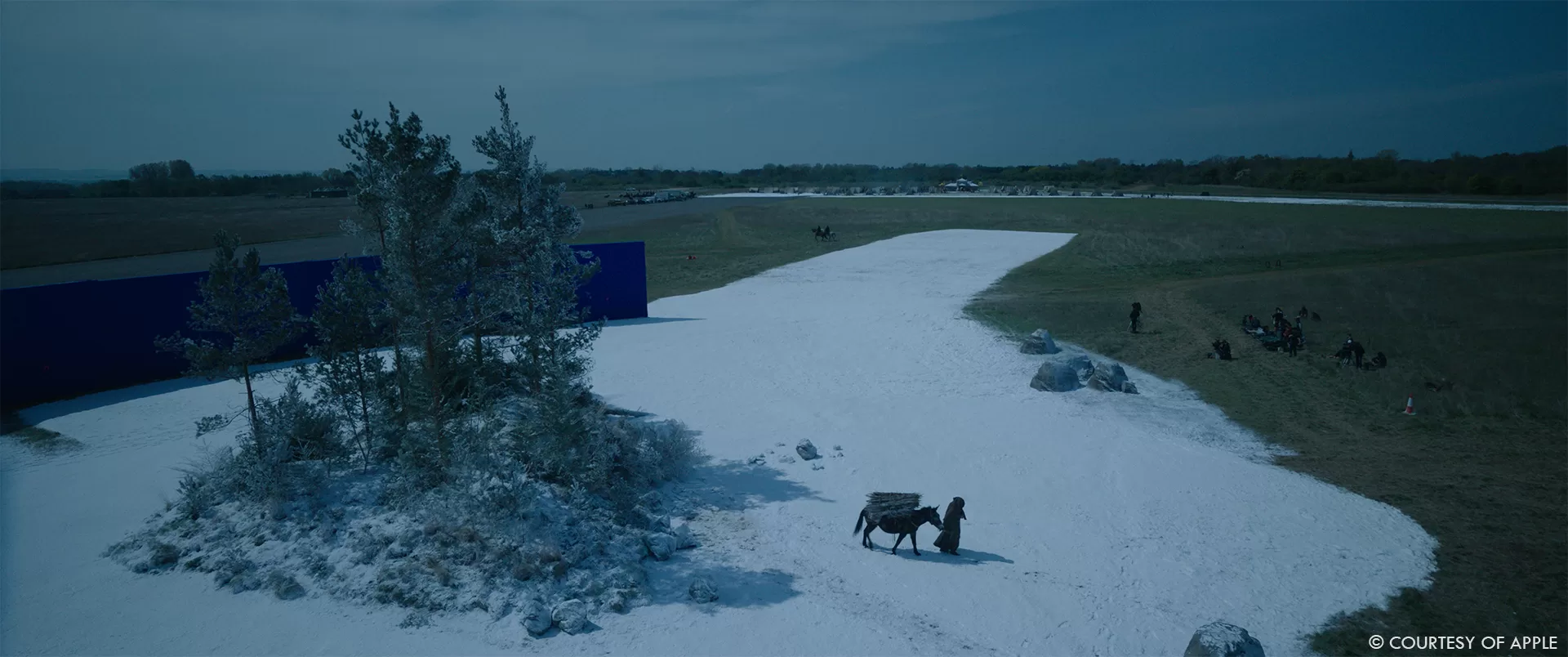
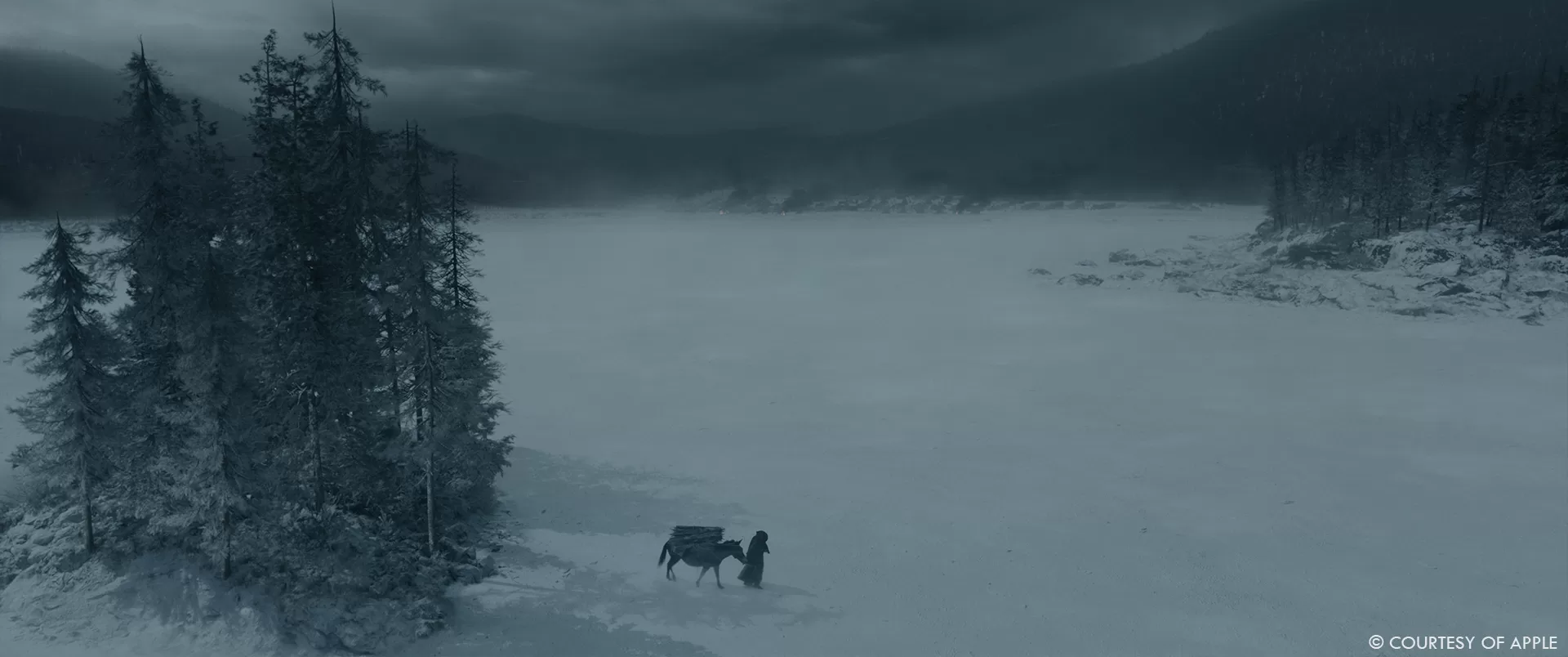
What was their approach and expectations regarding the visual effects?
The Battle of Austerlitz was a complicated scene to film, being set up across three different locations, with a variety of practical SFX and a large number of extras. Our challenge at ILM was to blend the three locations seamlessly, and to make the CG crowd look as real as the in-plate live action performances, so the viewer would not question what is practical or CG.
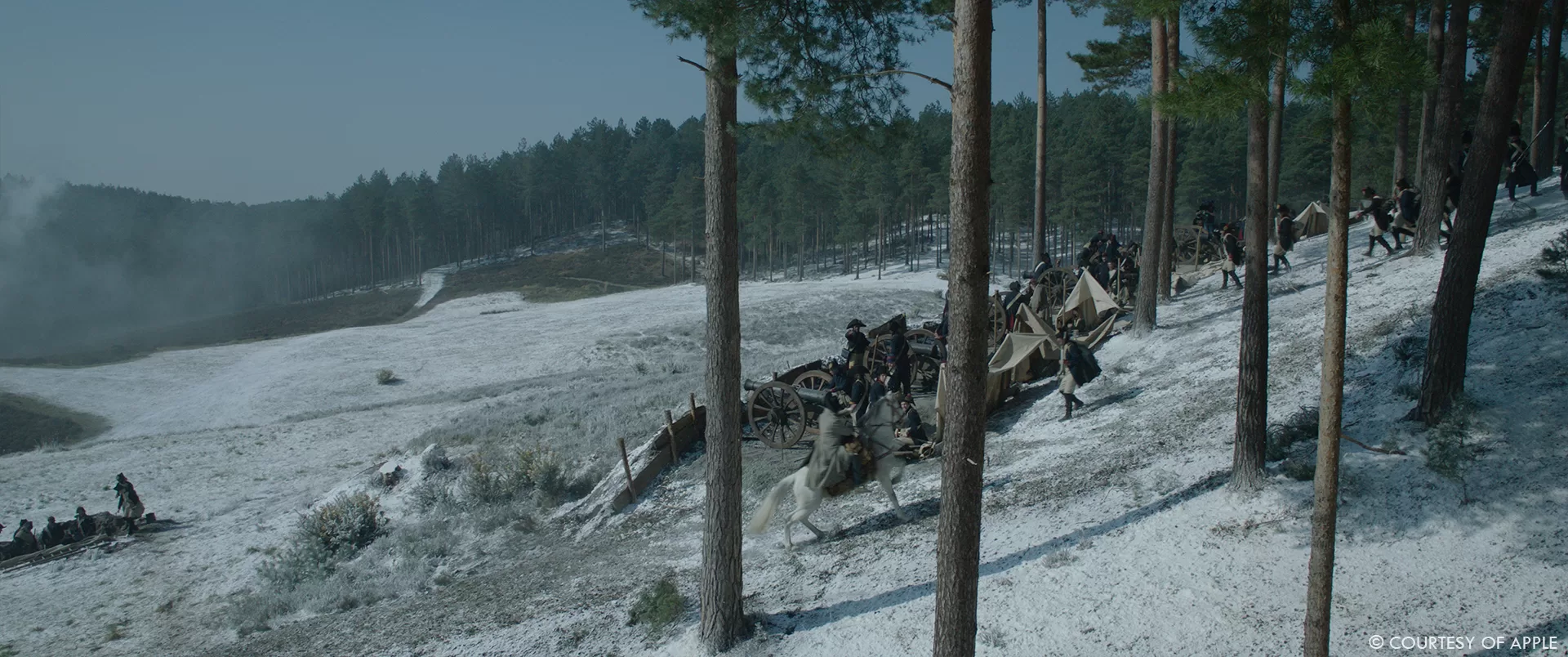
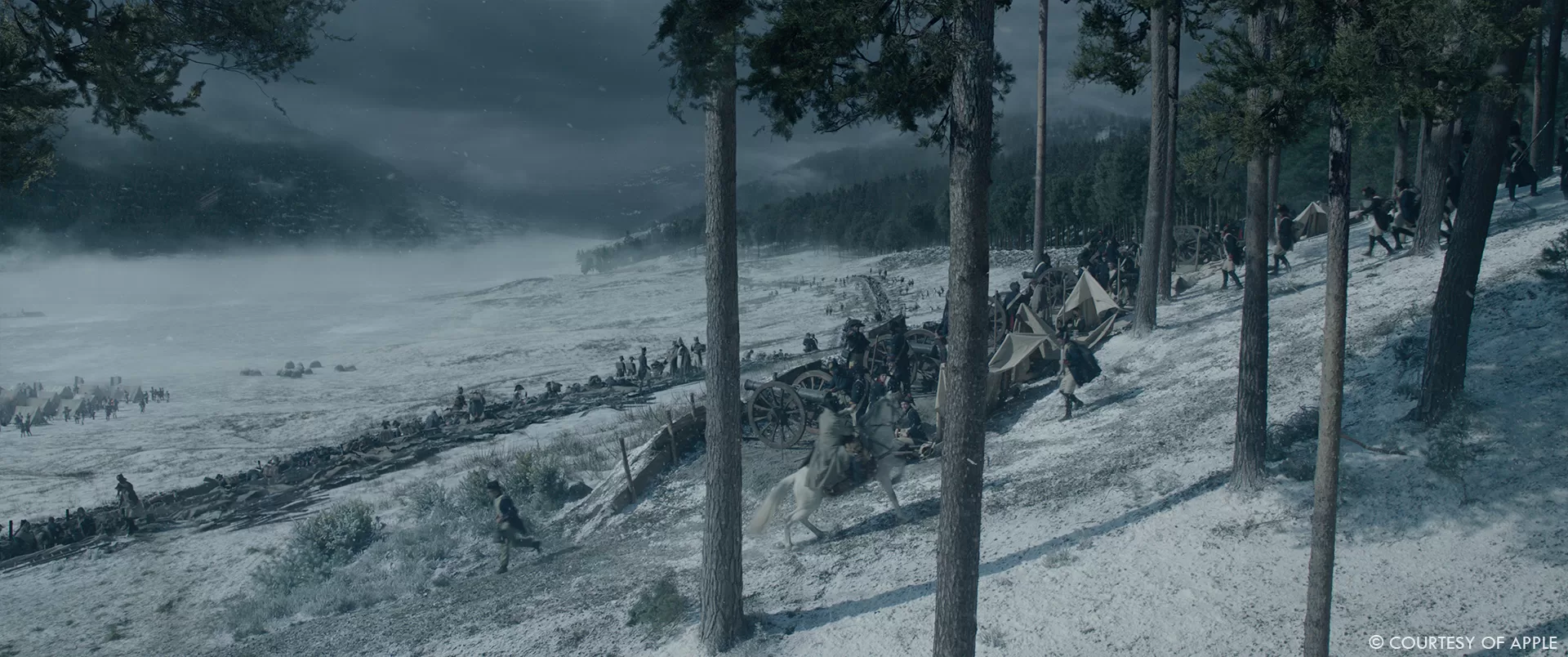
What were the sequences that ILM was involved with?
The Battle of Austerlitz and the March to Moscow.
Can you elaborate on the creation of the Austerlitz environments?
Principle photography spanned across multiple set locations, which were seamlessly integrated into one unified environment. To accomplish this we used LiDAR scanning, (supplied by Visualskies), drone footage, and extensive photography of each location to rebuild and extend the sets, merging them into the bigger CG-environment. Napoleon’s hilltop hideout required foreground tree replacement and an extension of the trenches into the distance. We recreated the cannons, cloth and numerous other set props, which were then procedurally scattered across the trenches. The village was digitally extended with CG tents, buildings, flags and other props. Additional augmentation was then added using matte-painting to extend the snowy ground-surface. Some shots utilized a full CG village to offer flexibility for the final shot.
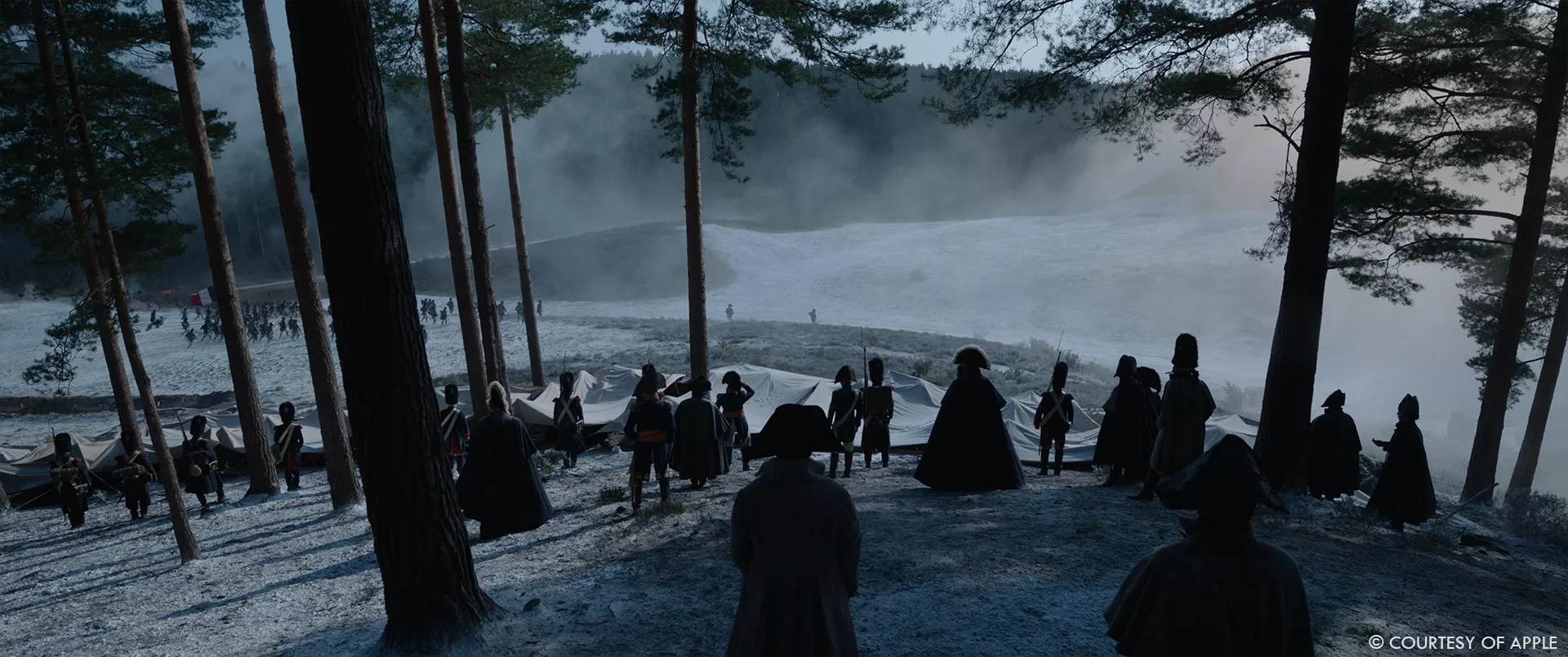
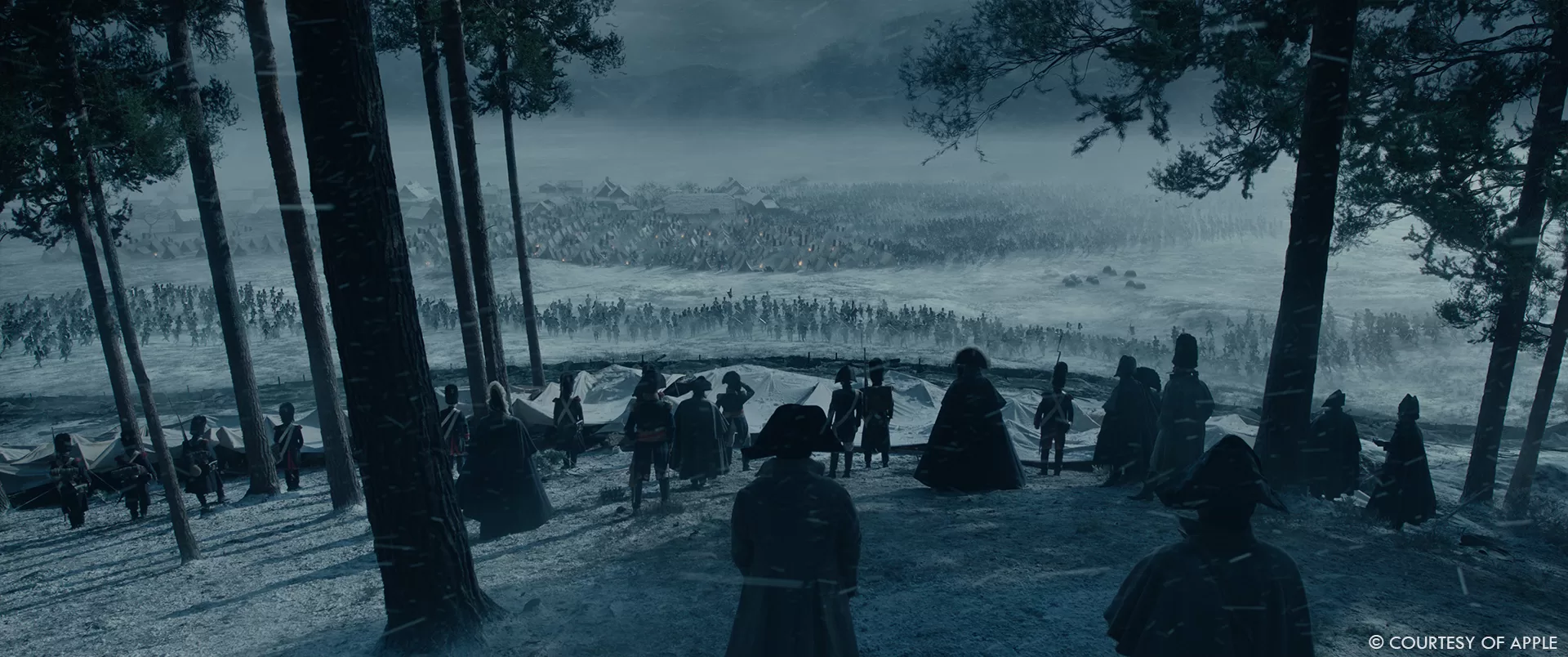
How did you create the armies?
We invested substantial efforts in preparing assets for the crowd scenes involving French, Austrian, and Russian armies. The team at Visualskies provided a variety of scan and texture data. Despite the size of the ILM model team there was not the bandwidth in the schedule to model and texture each individually. Instead, the team carefully curated a list of selects based on the unique costume items that each soldier had, and from this we had a wardrobe of garments to essentially kitbash from to make multiple variations. Within the scope of work different body frames were added into the variants, with some soldiers being more gaunt or obese than others. In order to round off the complexity of the crowd in plate, many additional props were modeled (bags, water bottles, swords, cups, belts) that were added to the soldiers in different positions. This ultimately allowed for an army of 63,539 possible combinations.
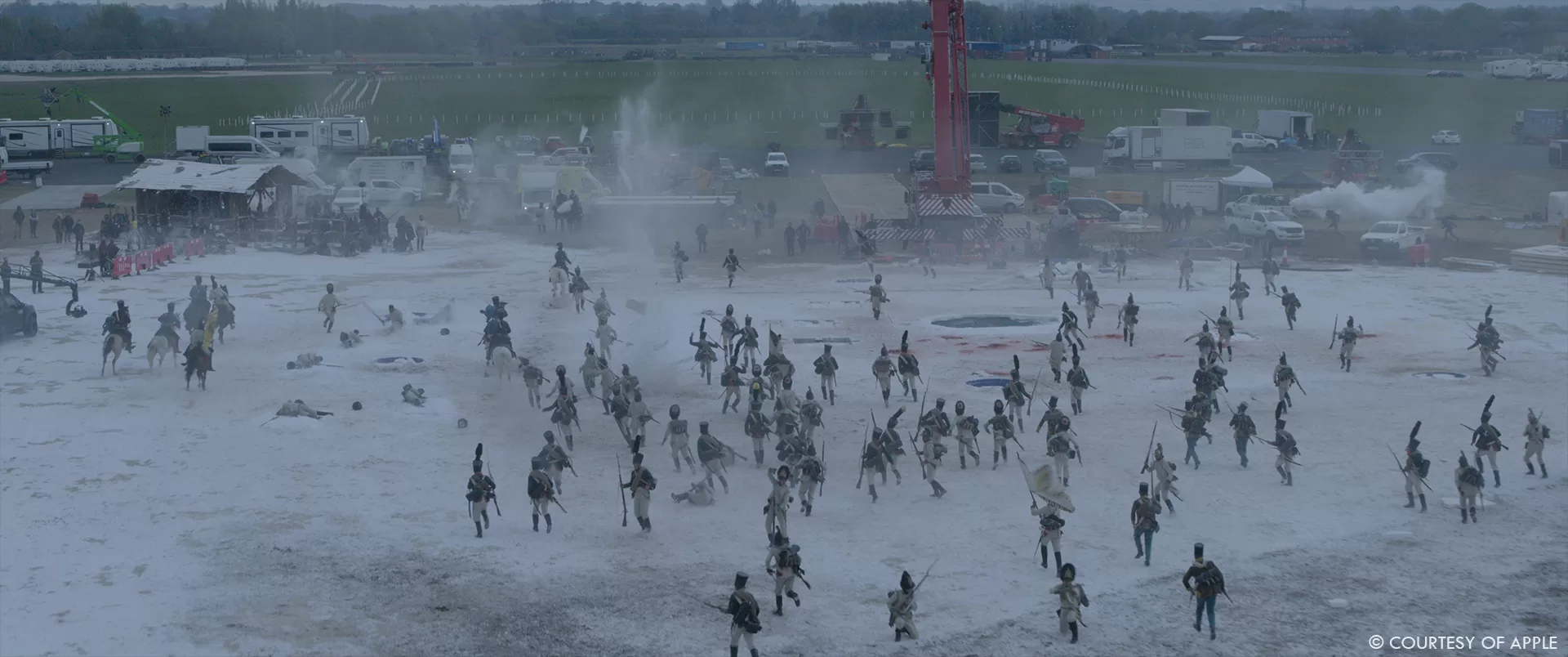
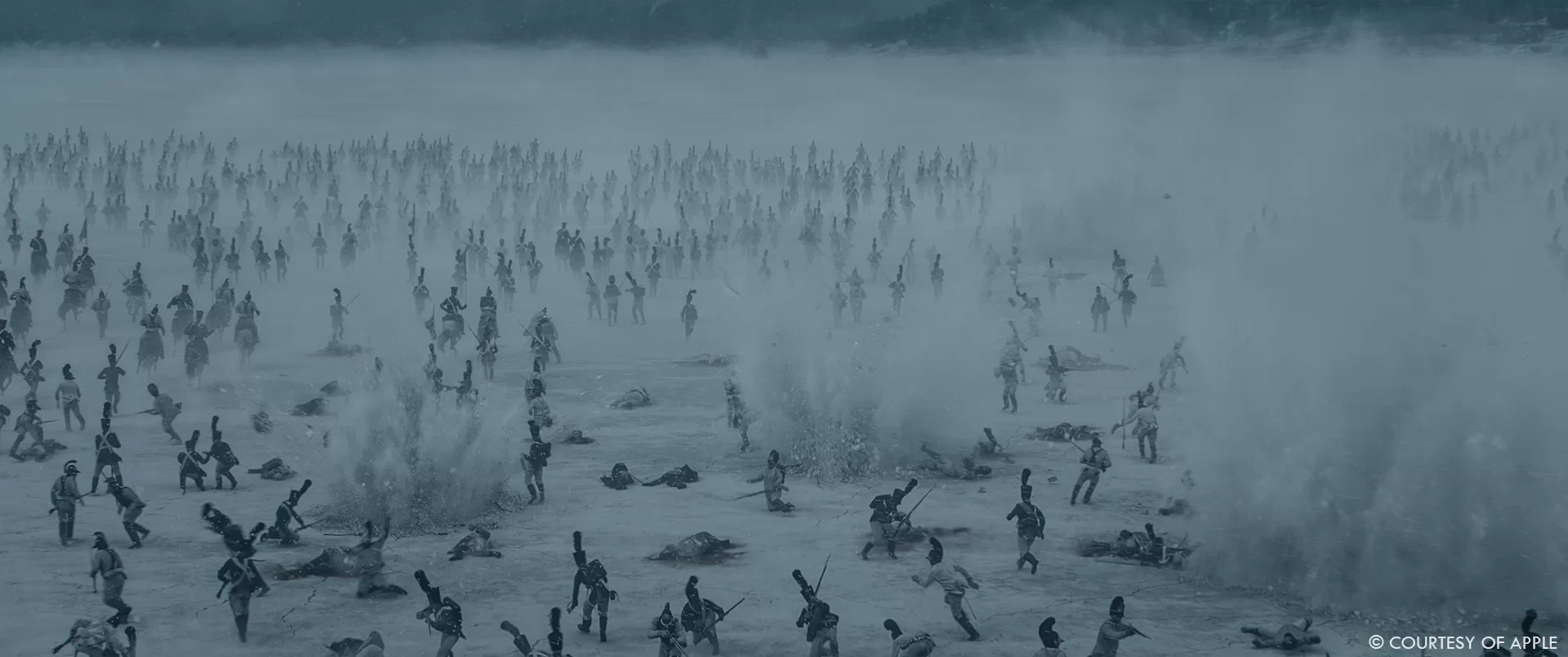
How did you handle the crowd animations?
We worked with The Imaginarium Studios to identify key motions for both bipedal and quadruped assets that would help to bring the army to life. A range of actions from basic locomotion to intricate fighting, cannon choreography, and horse interaction was supplied. Weapons were used to help provide variety to the animation, but also to break down the uniformity of the costumes. These went through an extensive clean up process during their integration to the ILM pipeline (fixing foot balls, prop and body intersections etc). Based on environment or scene triggers, our proprietary toolset blended between these cycles / motions to create the high-fidelity motion you see in the movie.
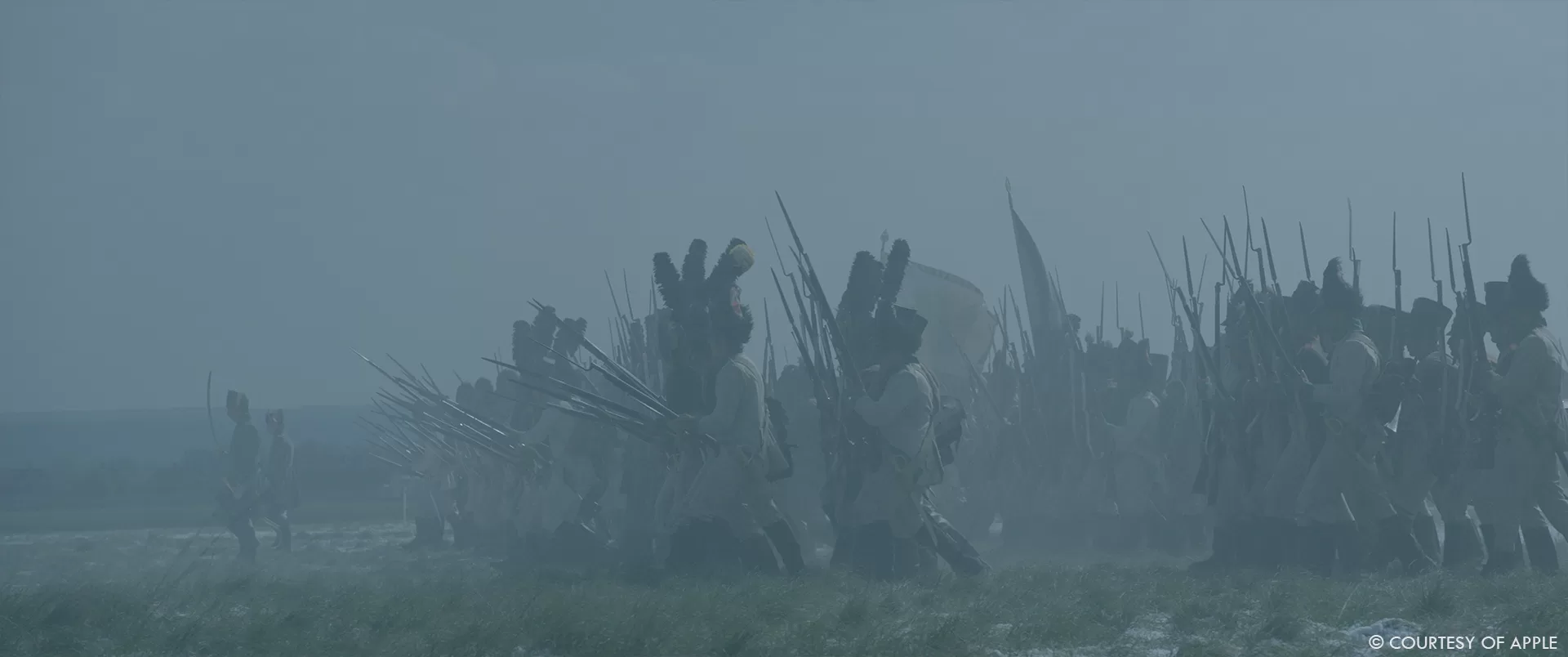
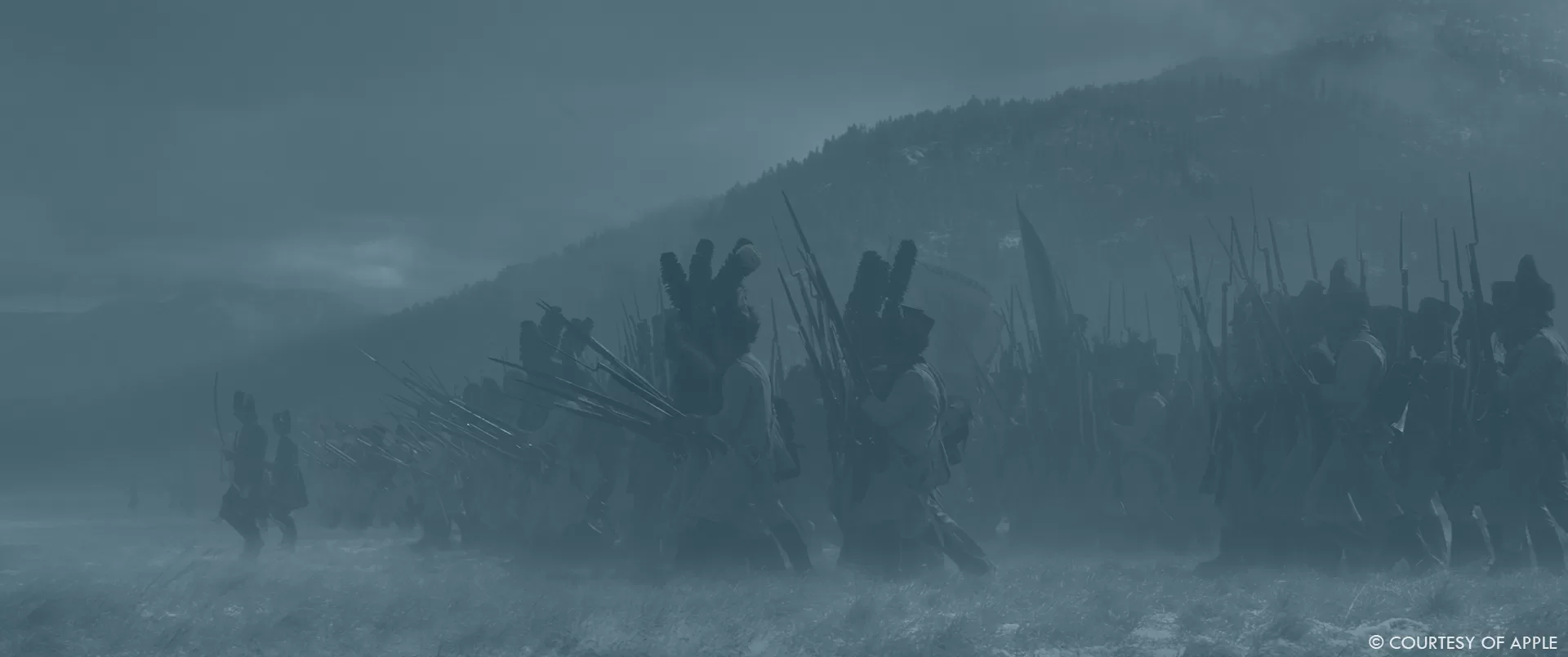
Can you tell us more about the creation of the horses and their animations?
Like the soldiers, a large-scale motion capture approach was adopted for the horses and riders. A pop-up motion capture studio was created at The Devil’s Horsemen, UK, which granted the ability to create a large area for a horse friendly capture stage. The ingest of the horse motion capture was a complex process and ILM needed to build upon its retargeting toolset in order to be able to ingest quadruped data (as well as the traditional bipedal data). In many cases we adopted a hybrid approach, where mocap data provided the nuanced elements required to convey the motion authentically, and fully animated locomotion was overlaid. This helped achieve the desired level of realism for an animal known for its complex structure and behavior.
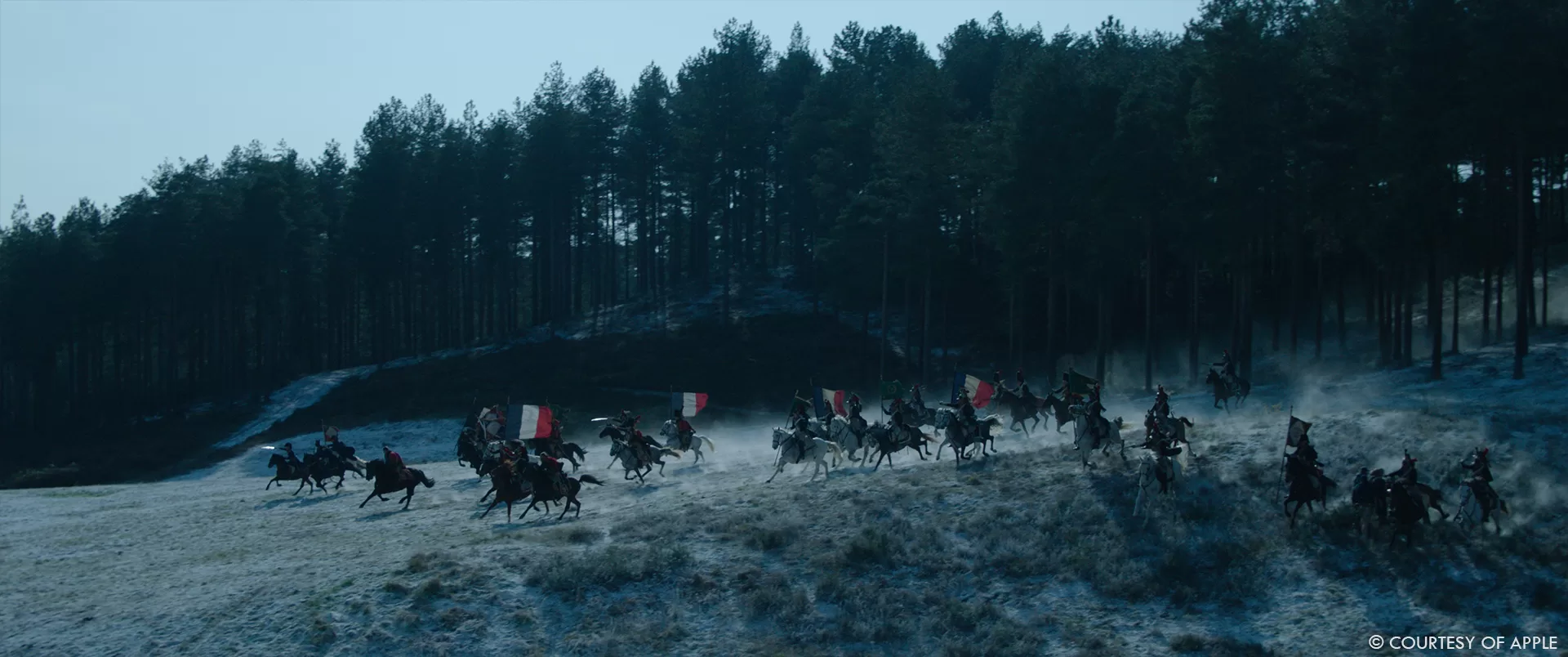
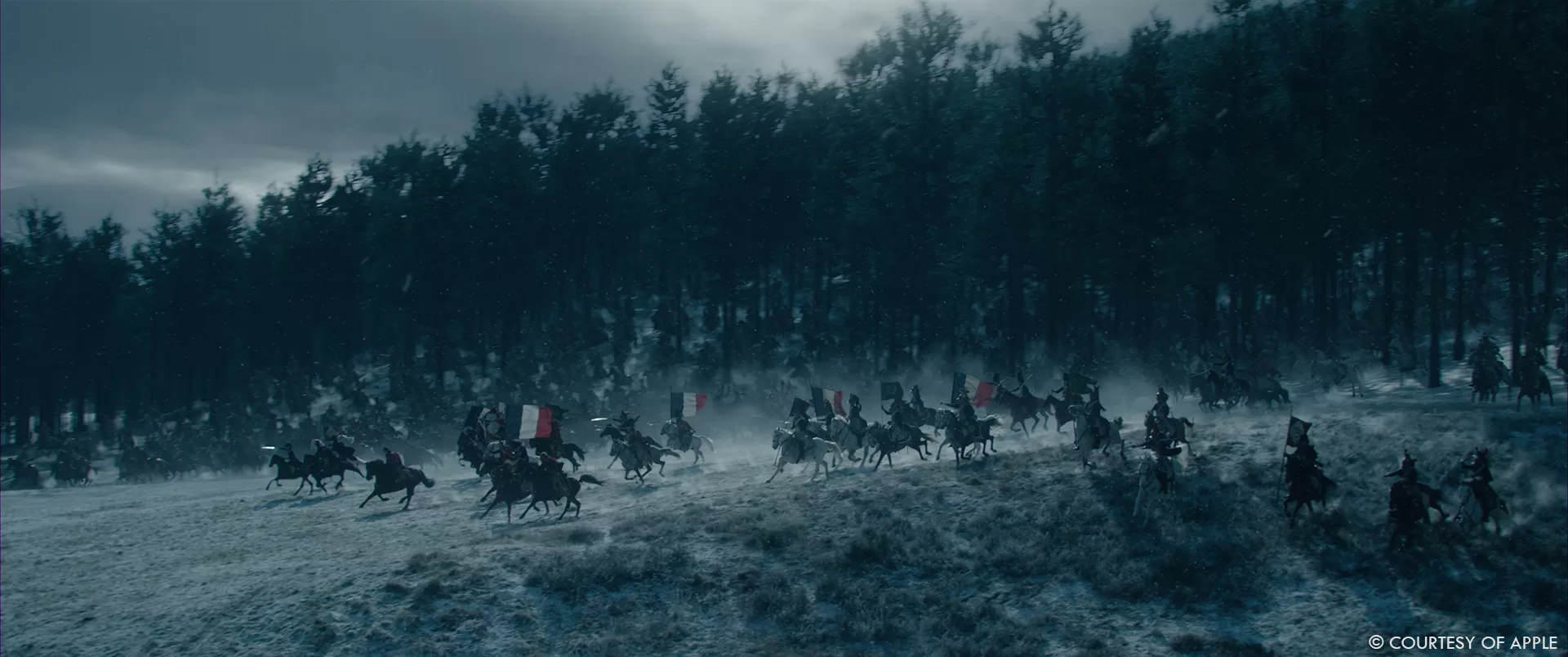
How did you enhance the practical SFX work?
For the cannon explosions, we used the pyrotechnics and talcum powder plates shot, and enhanced them with FX simulations. Some shots needed full CG take over, which used incredibly-detailed cannon fire, shot from the SFX team. For the SFX explosions on the ice lake, we would layer FX water splashes and CG ice debris to enhance the size and sense of peril, as well as adding FX blood to add gore to the sequence.
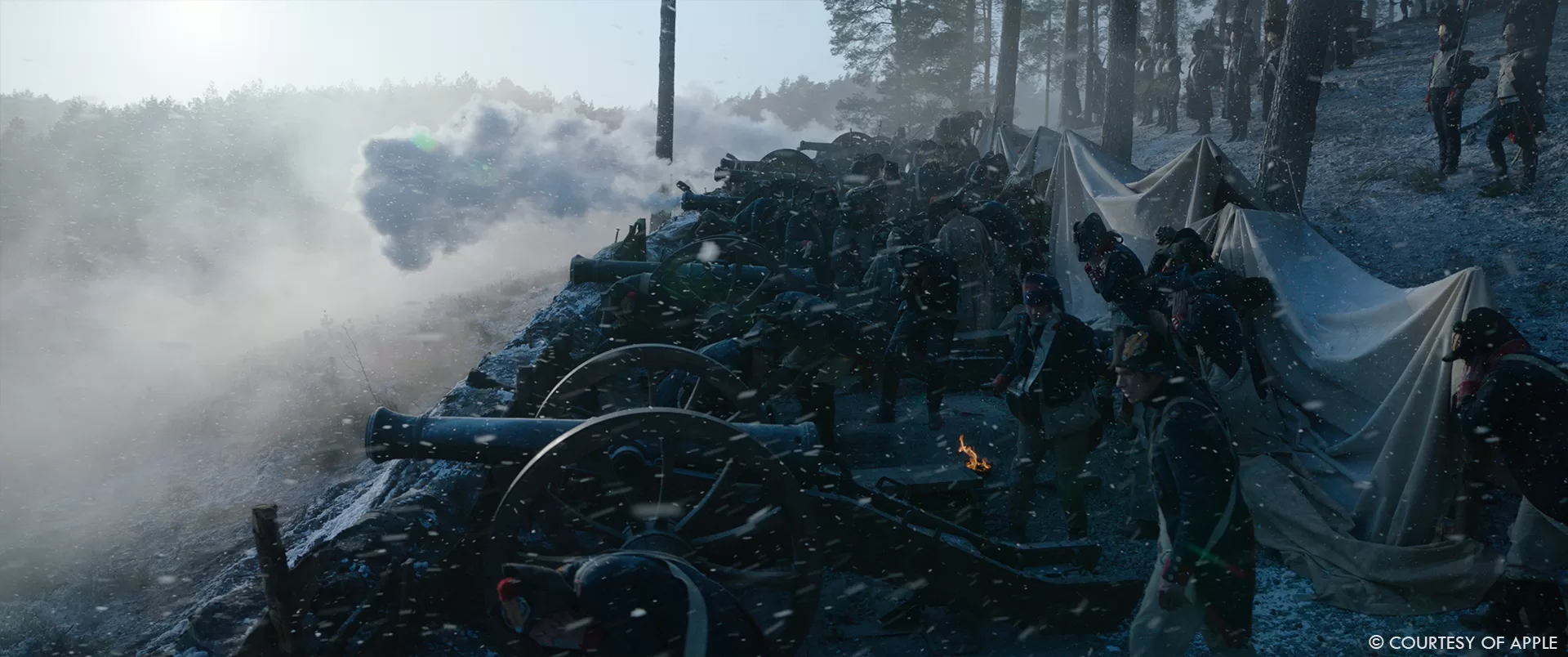
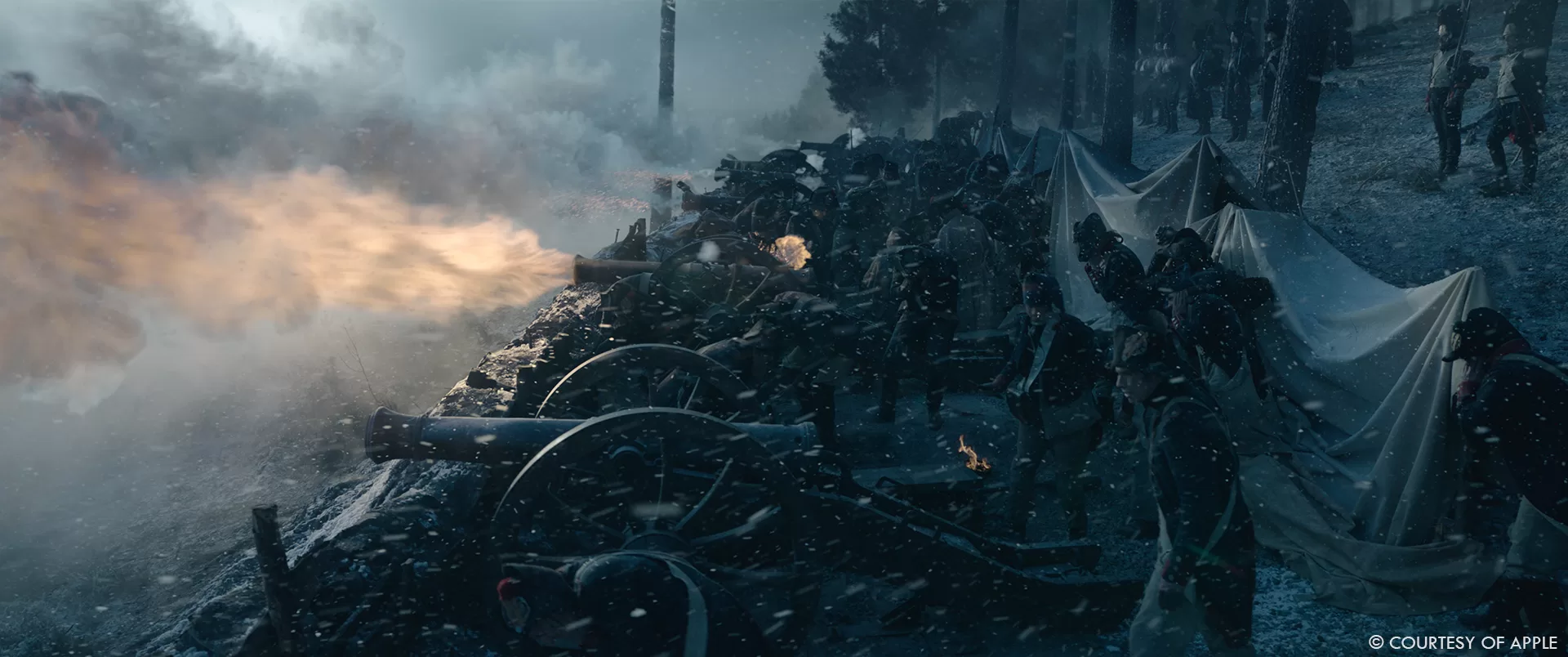
Can you elaborate on the impressive underwater shots?
Plates were captured with actual soldiers inside a tank at Pinewood Studios, complemented by SFX to construct a setup for the cannonball’s journey from the lake’s surface to underwater. While some of the plate photography remained intact, others were partially replaced during post- production. This involved simulating ice sheets, replicating crowds underwater with full simulation, recreating the cannonball’s path through the water, complete with trails of air’s bubbles, and incorporating CG blood that sometimes even filled the entire frame. In order to preserve the genuine photographic quality of the shot, we created specialized tools within Nuke to precisely simulate the chromatic dispersion of light as it passes through water.
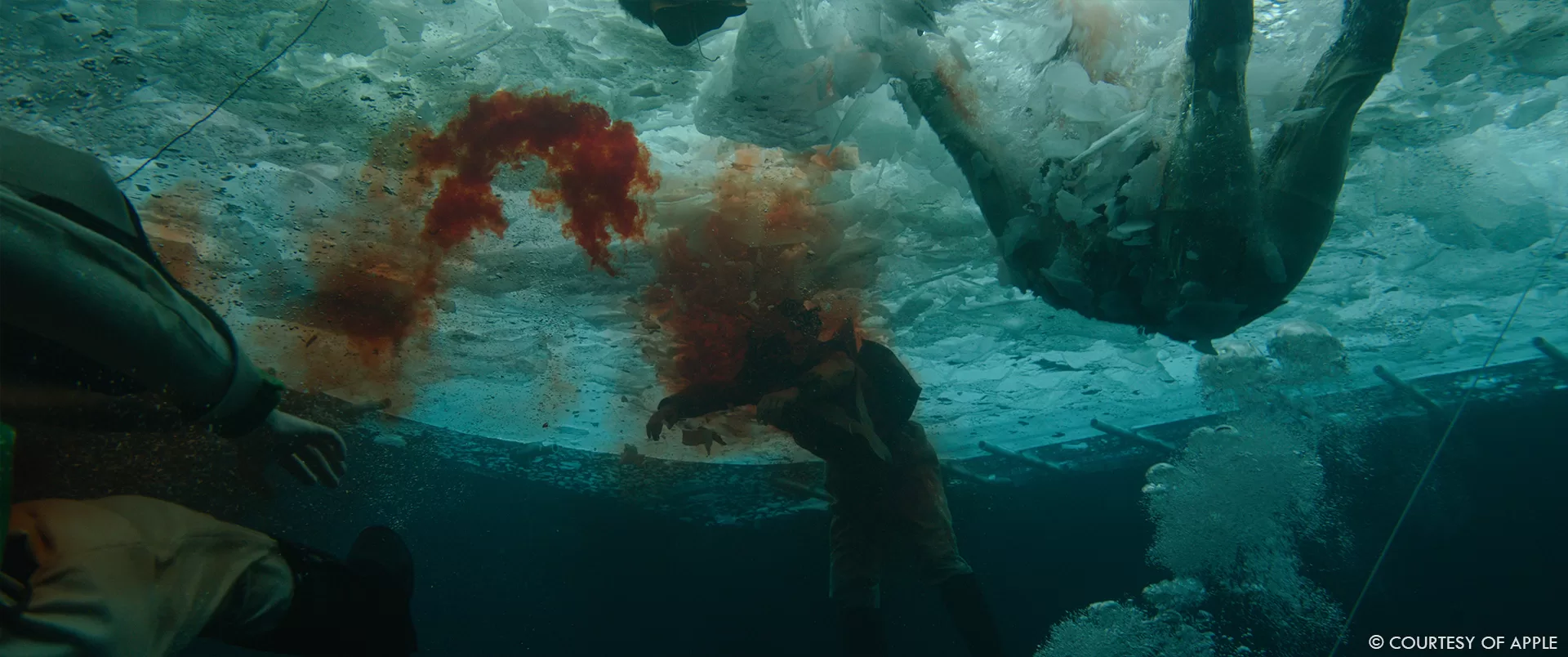
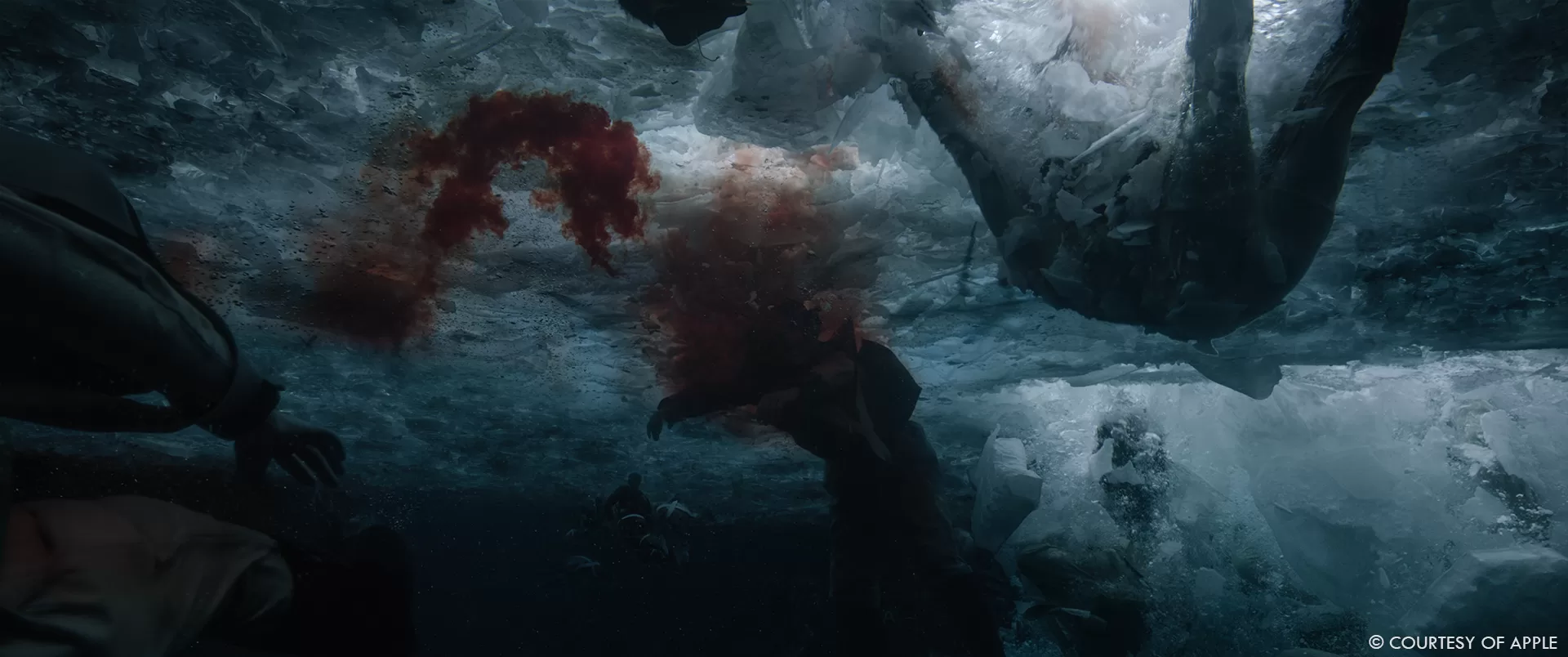
Can you tell us more about the march across Russia?
This was a smaller sequence of 11 shots, involving snow and breath addition across the sequence. The opening shot was a wider CG environment, with CG troop extension off into the distance.
Which sequence or shot was the most challenging?
During the Battle of Austerlitz there is a run of shots where the cavalry charges towards the village. Combining the practical locations and elements shot, as well as CG and practical crowd, all together was the most challenging aspect of the sequence.
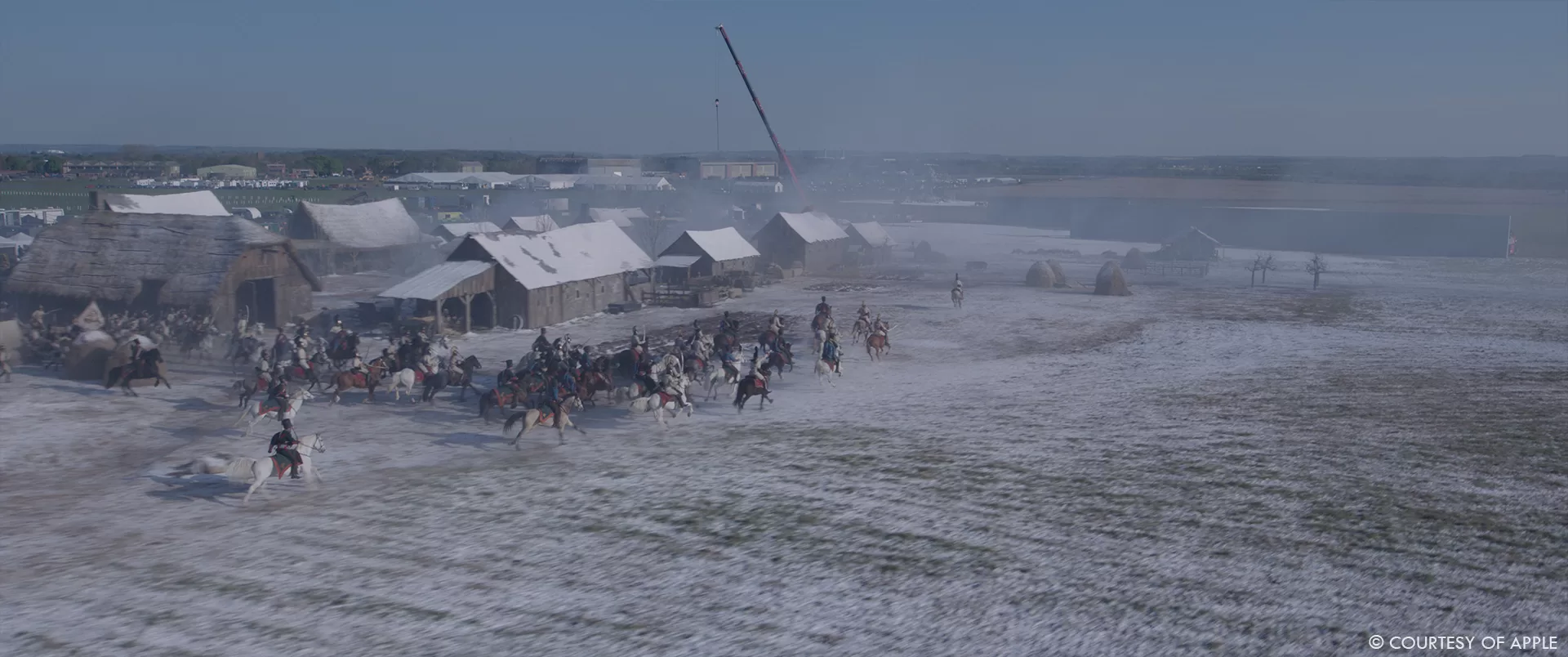
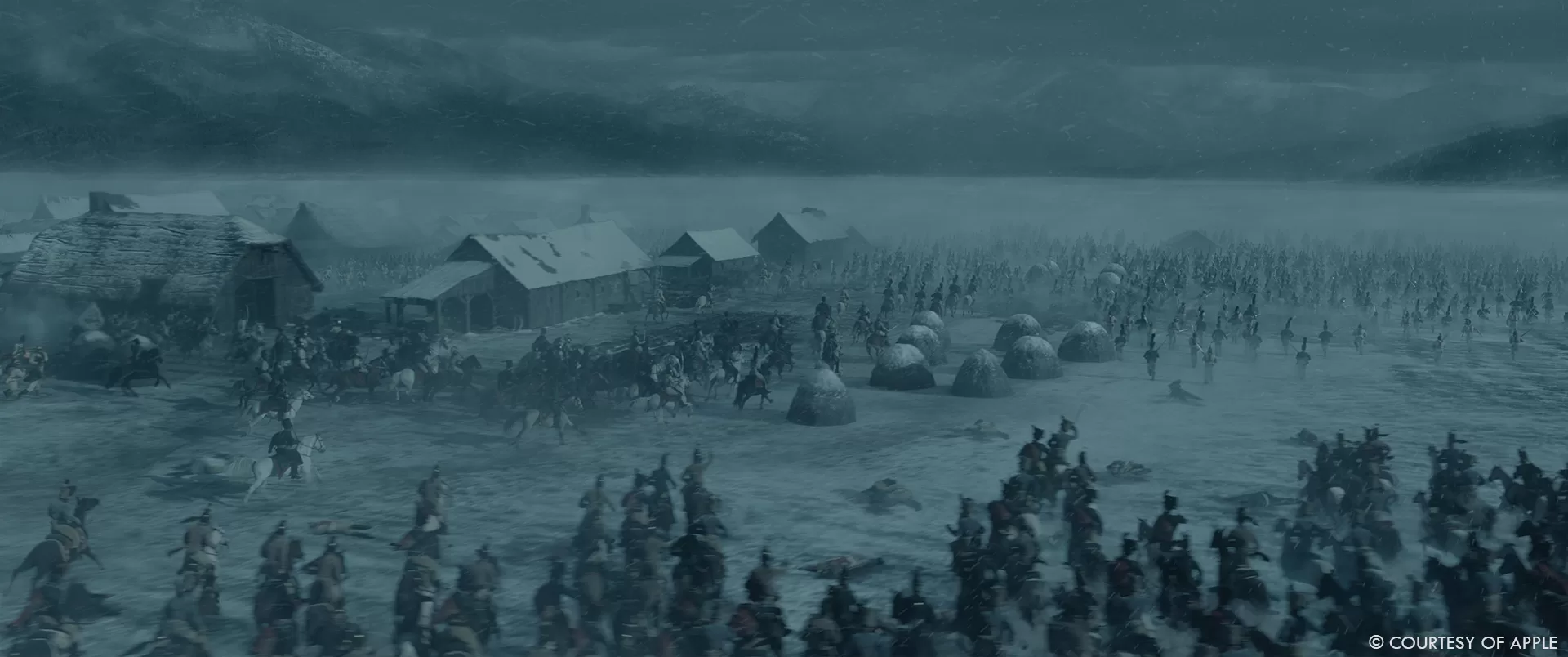
What is your favorite shot or sequence?
It’s hard to pick just one shot! Before the battle, Napoleon rides up to his hilltop location, his troops building the trenches cheer upon his arrival, this is one of my favorite shots as the environment and compositing work is just beautiful.
What is your best memory on this show?
Collaborating with the exceptional team at ILM, from the dedicated production and supervision crew to the talented artists, was a truly enjoyable experience. I cherished every moment spent working together to craft something extraordinary.
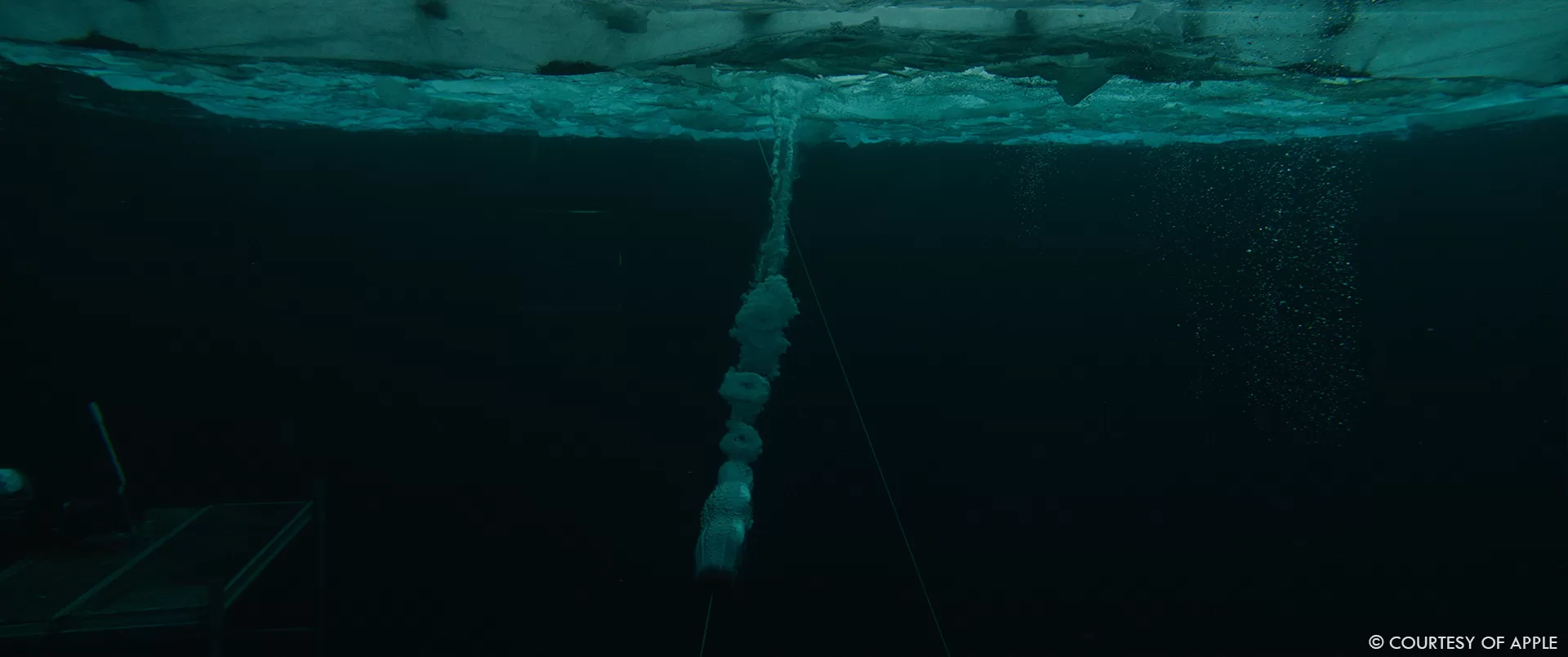
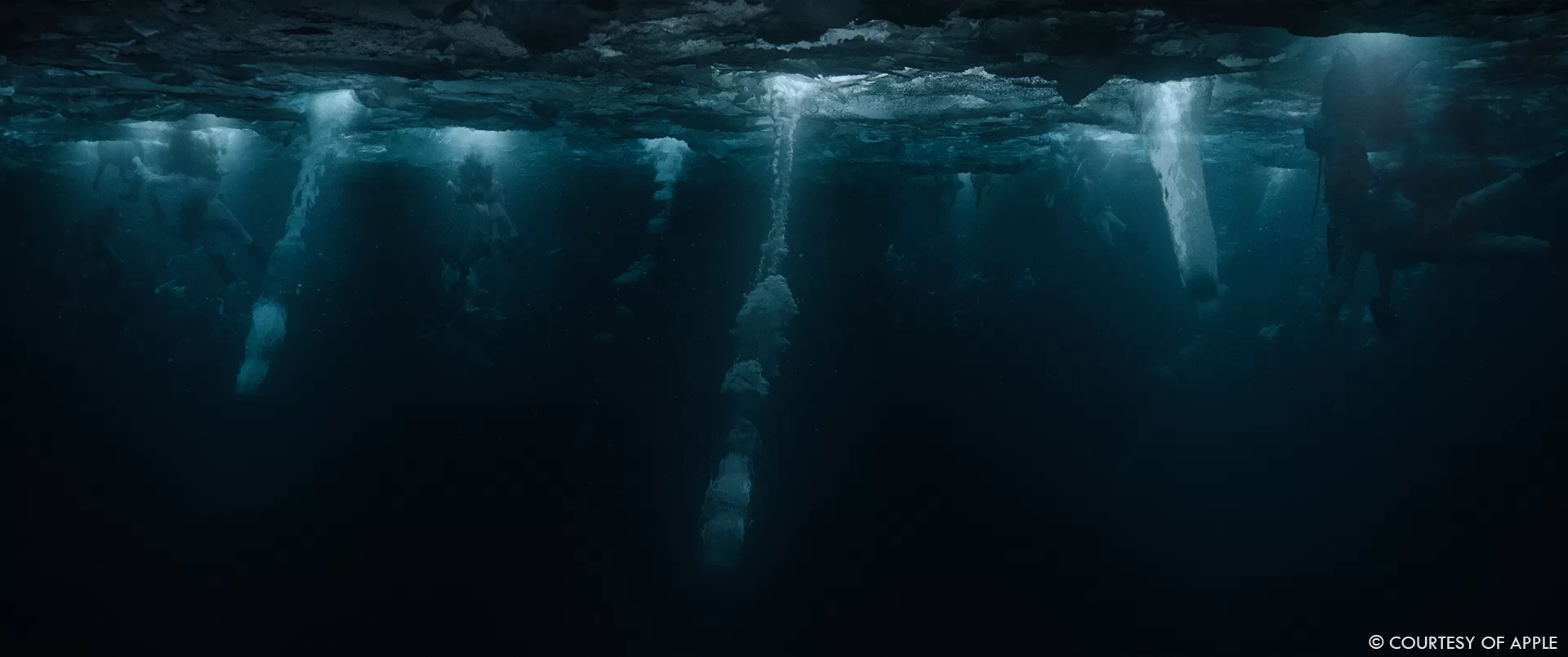
What is ILM’s shot count?
145 shots.
What are the four movies that gave you the passion for cinema?
One of my earliest memories is watching Back to the Future, sparking my fascination with the film and a curiosity about its production. This experience ignited my interest in visual effects. Jurassic Park, The Matrix, and The Fellowship of the Ring were groundbreaking films that elevated visual effects to new heights during their respective eras, inspiring my desire to pursue a career in this field.
A big thanks for your time.
WANT TO KNOW MORE?
ILM: Dedicated page about Napoleon on ILM website.
Charley Henley: Here is my interview of Production VFX Supervisor Charley Henley.
© Vincent Frei – The Art of VFX – 2024






